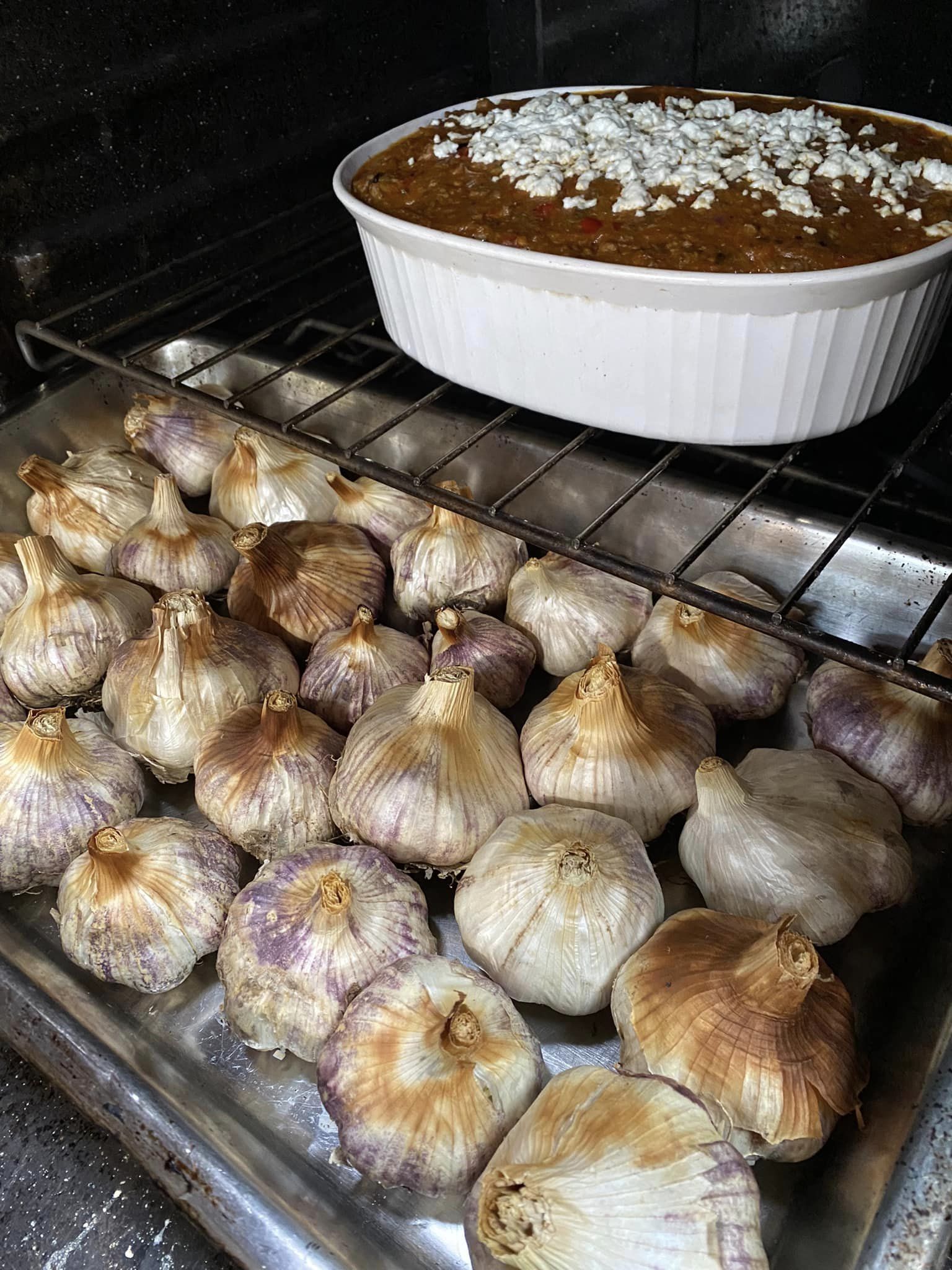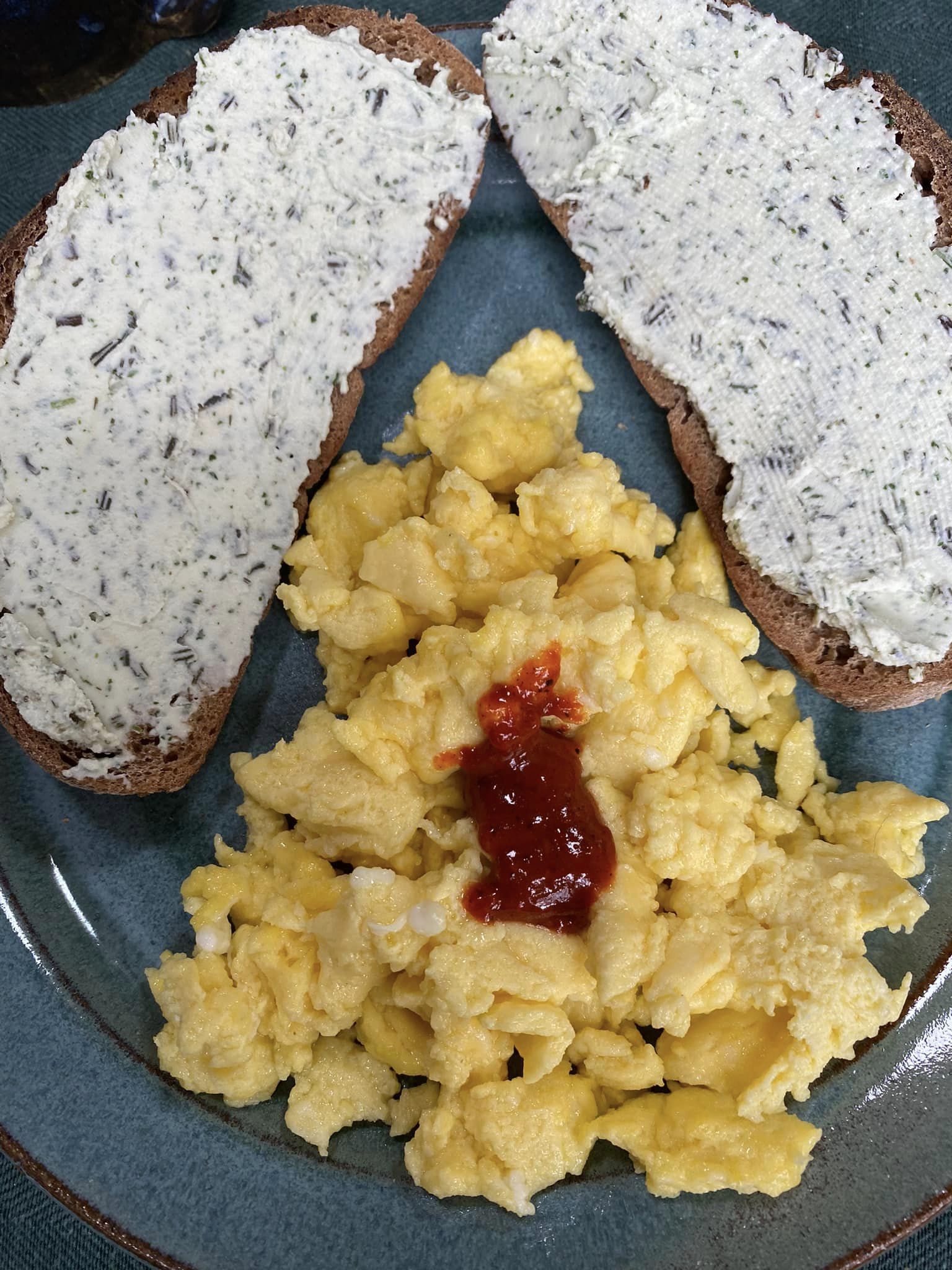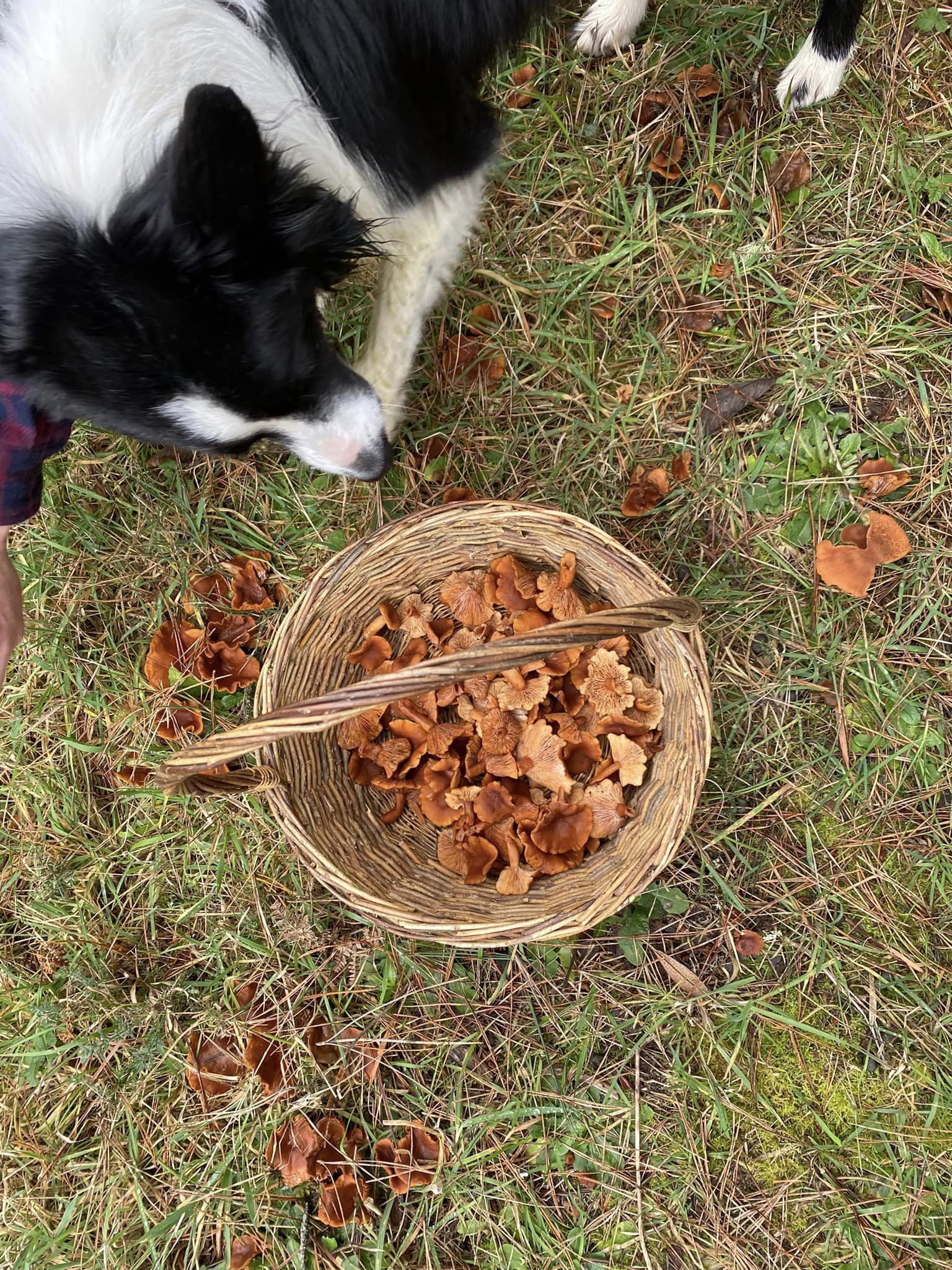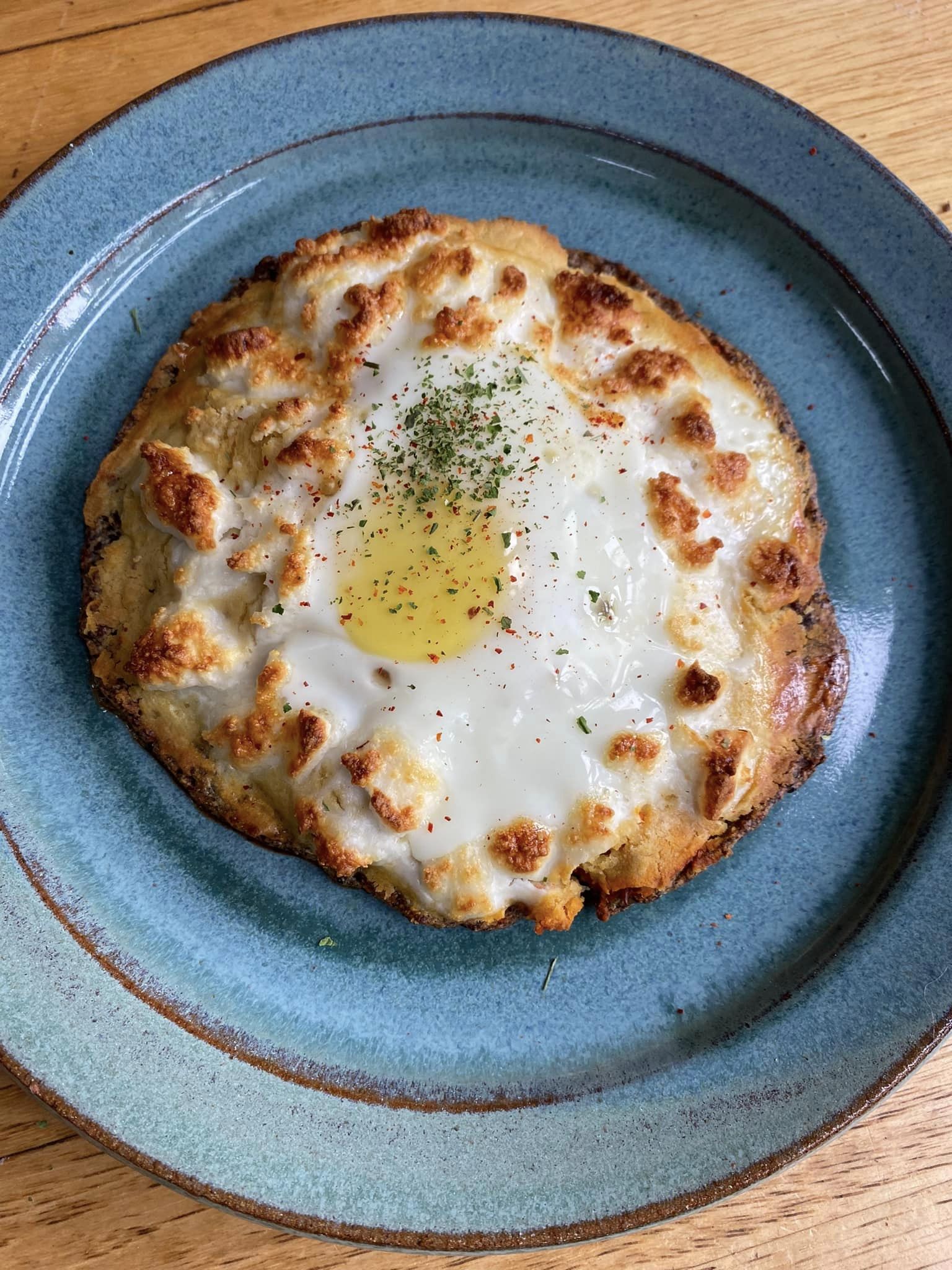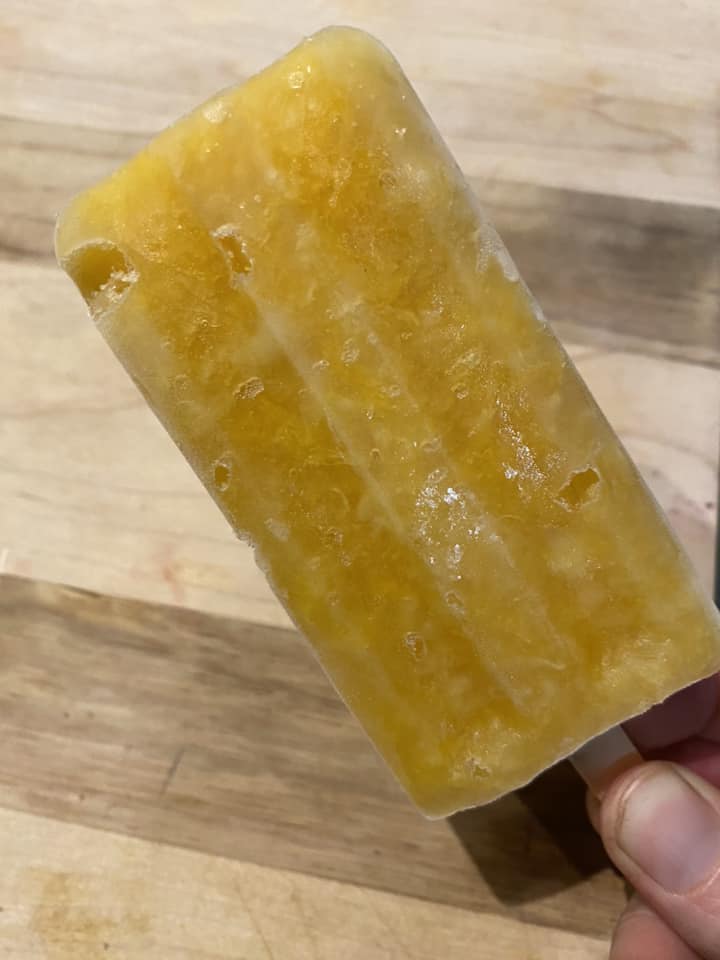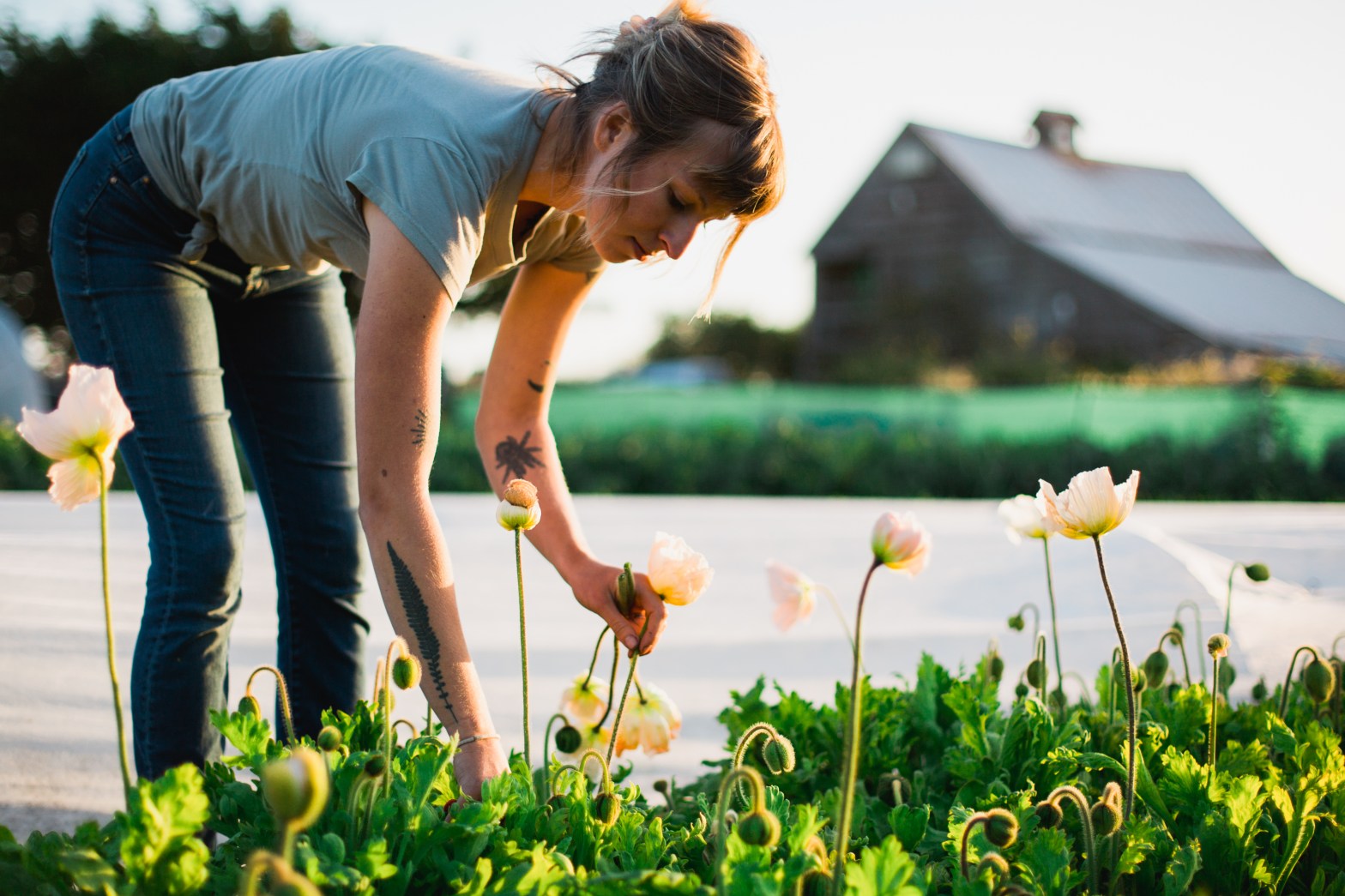It’s the dark of 5am and there’s a reaching streak of condensation at the bottom of each window. One partner is sleeping, the other is moving drying corn around on the rack erected above the four poster guest bed checking for mold, and stirring drying salt in flat pans in the dehydrator, and simmering molasses made from reducing the broth of boiled shucked corn cobs on the wood stove. They are the little steam engine generating the fog on the inside of the windows this morning. Why don’t you just write, they said.
The sweet smell of corn molasses is entwining uneasily with the rainy mushroom smell of wet ducks insinuating itself through the vents in the kitchen that lead into the attached greenhouse. Our gaggle of teenaged ducklings must have successfully turned over their water again, despite the wide shallow basin M wedged it into. When M wakes up the duckies will be the first visit on the list, made with coffee.
Yesterday I canned the last cucumber pickles of the year, in the water-bath. Usually I do sliced rounds and I just fridge pickle them, because otherwise they get mushy. Fridge pickles are packed raw into sterile jars and have boiling brine poured over them, and are sealed. The jar lids sometimes ping, but because they haven’t been processed in boiling water, they are not shelf stable and need to stay in the fridge. A couple dozen quarts in the fridge is a lot of real estate, even if we do have a commercial reach-in. The main reason for canning in the first place is shelf stable storage, but… nobody likes a soggy pickle.
The varieties of cucumber I usually grow are the long thick green slicers and round lemon cucumbers that don’t lend themselves all that well to water bath canning. On the foggy coast the fruit will grow, but the plants always look sad and defeated. I grow them on black ground cloth in a high tunnel, but they still look anemic and sullen about it. Their fruits are also thick skinned compared to their inland relatives, but tend to set a lot of sugar. For the first time this year I peeled some of our big spiny cucumbers to make into sliced rounds prior to canning and they have turned out sweet and crisp and pale as water chestnuts.
Yesterday’s pickles were grown by my friend Michelle at Green Rainbow farm, inland above the fog layer. I had thought pickles were done weeks ago, and had put away all my tools, but then got a text and jumped on the chance. The variety she grew makes a short, nubby and sweet little cucumber with a vanishing skin and must be intensely time consuming to pick with their small size. Michelle put aside a bag for me in her farmstand in Mendocino, on the patio of the GoodLife. I picked them up alongside my lover’s favorite gluten free carrot cake cupcake and a loaf of buckwheat bread.
Washing the small cucumbers in a basin at home I remembered in my bones waking up in the dark in Oregon to pick cucumbers before the sun could get on them. I loved picking them by feel with my headlight off, smooth and warmer than the rough ground or the prickly vines, and hated the way the end of the row was invisible in the dark, making it feel endless. The Russian customers that came to the farmstand wouldn’t buy anything picked the day before, picked in the heat of the day, or longer than a pointer finger. When one of the grandmotherly customers brought us a jar she made, they were crunchy as fresh fruits and spicy and tart- the best I’d ever had- but their quality cost a lot of crawling and lost sleep. I admired their fervour, but not enough to replicate it. I’m happy to just have good pickles instead of perfect ones, and pick them the day before.
For these pickles I boiled brine made from sterilized filtered sea water and boiled apple cider vinegar from Philo Apple Farm. You MUST boil this living vinegar or it will grow in your sterile jars and burst the lids off, a lesson I learned hard with our first two batches this year. The fermented pickles were still perfectly safe to eat and delicious, but wouldn’t store long term without processing which would render them soggy. We ate them quick and learned to boil the vinegar in the future.
To this brine base I added powdered citrusy chili, dill and coriander, and flakes of parsley, as well as the strained juice of four small shriveled local Meyer lemons.
I blanched the clean cucumber fruits in the brine momentarily and packed them into clean jars warmed on the wood stove. Warming on the wood stove is great because the notorious crack zone, the bottom, warms first instead of last… as long as the fire is a mellow sleepy one.
After packing the hot jars I got the brine boiling hard and ladled it over the fruit, leaving 1/4 inch of headspace.
Wiping each jar rim carefully I placed the Ball rubber seal canning lids… and then fumbled around for a ring that actually fit since Late Capitalism doesn’t care about food safety and the Choice and Country Classics type jar rings are not compatible with Ball. This corporate decision ruined several quarts of salsa earlier this year when the rings came off in the canner and earned my ire for all time henceforth. I still have not entirely purged my ring stash of their evil, since I made the mistake of assuming safety standards would require compatibility and sterilized all the quart rings together regardless of brand.
I took the sealed jars to the porch where the propane cannon was roaring under the boiling enameled canner. I set the hot jars slowly into the boiling water, finding their resting place on the metal rack on its bottom. The water level… only came up to the top of the lids, as the batch was small and hadn’t filled all the slots. This was a problem because time in the canner equals mushy pickles, but the timer can’t start until the water level is 1” above the lids of the jars. I ran inside and grabbed a jar from the top of the now roaring stove, which had been built up by my partner who had come in cold from chores. Gingerly holding the rim with my calloused fingertips and cursing over my burn from the hot glass I filled it with the warmest water from the sink… which promptly cracked the bottom of the jar from the temperature change. The hairline crack still held water, so I plunked the open topped jar into the canner, which raised the water level enough to start my timer. My partner M adding a clean brick to the pot was a less dangerous and effective addition.
15 minutes later the jars were fished out and set on the warmed deck. I usually lay out a fluffy insulated towel, but I had left it inside, so I just splashed a ladle of boiling water onto the wood to lessen the shock of transition and set the jars down. None cracked.
The time between setting the full jars down and their sealing is a superstitious and delicate time. I always tell myself I am not going to check until they cool, but I always do, running my fingertip as lightly as possible across the hot metal surface of the jar lids. Any bump or telltale dimple in the lid means the jar has not sealed, and will have to be re-processed from the beginning or stored in the fridge and used first. Any disturbance during this time can foul the seal.
When I pulled this batch out with my worn jar lifter, most hadn’t sealed, which is normal in a short bath. I determined to focus on other things, and by the time I came back, they had all sealed. The dimple that was in the lid was gone, the entire surface smooth and slightly concave.
This morning I will take the rings off the jars and check the seal, spin them a few times gently to bring any bubbles in the brine to the surface, and fridge any that don’t appear perfectly sealed. The chaotic last pickles of the year are done. Kraut and kimchi making and acorn shelling and bay nut roasting are ahead. Persimmons to slice and dry and ginger to grate and freeze sit next to the few last tomatoes. Crates of spaghetti squash with dings that will not cure sit waiting to be cut, roasted, topped with marinara made from the last tomatoes of the year and packed into the freezer baking trays H bought me, that come with a top for storage but can go right into the oven.
Every bite of food represents work at every trophic level. Every moment of present comfort is a gift from past labor, like excessive luxury can be a theft from the future. I want deep winter and its small circle of chores and wood stove and bed, and to take from the pantry instead of give, but this is how we get there.
The sky is turning a bruised melon pink with purple at the edges, the chickens are waking up and peeps are issuing from the vents to the attached greenhouse. Coffee is being pressed, we are all awake and working separately in this close shared space. The pickles are done for the year. Out of the dozens of tasks on the list, that box is well and truly checked and I can relax.
There’s a message on my phone from last night, from Green Rainbow Farm. They might actually have some more, if I’m interested. Of course I am.











